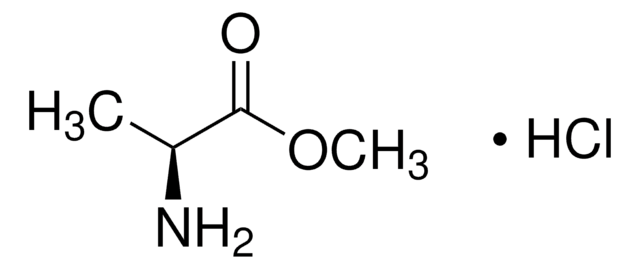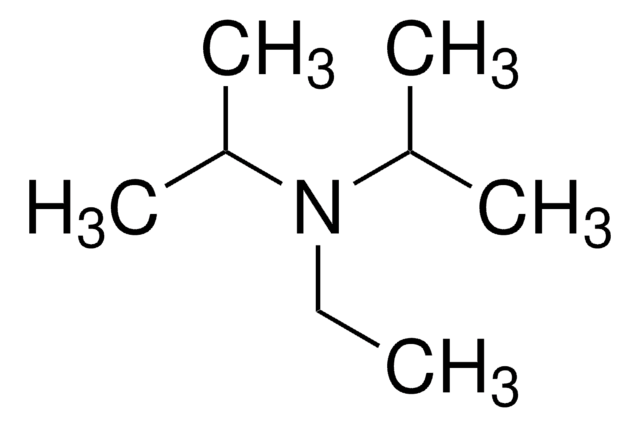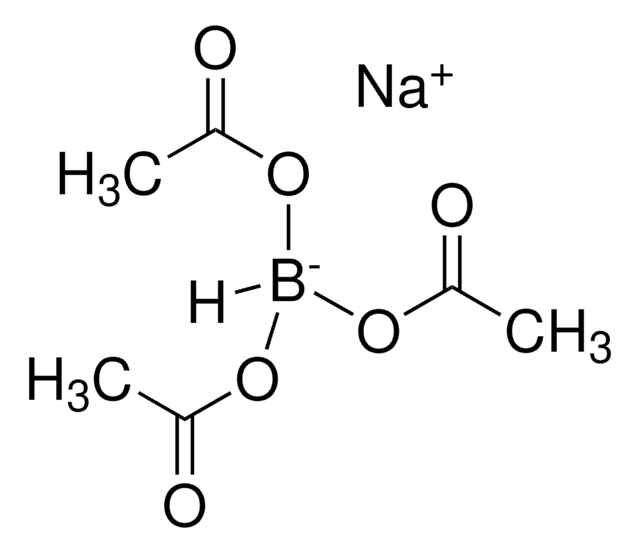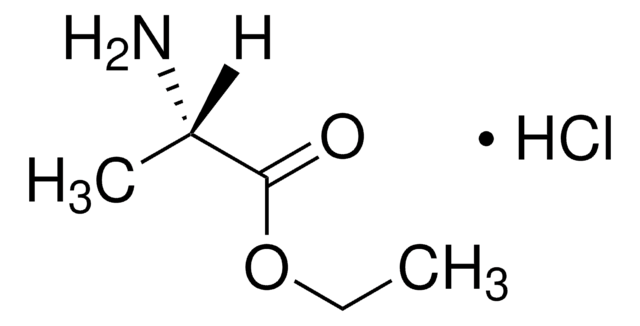All Photos(2)
Linear Formula:
CH3CH(NH2)CO2CH3·HCl
CAS Number:
Molecular Weight:
139.58
EC Number:
MDL number:
UNSPSC Code:
12352209
eCl@ss:
32160406
PubChem Substance ID:
NACRES:
NA.22
Recommended Products
Quality Level
Assay
98%
form
solid
optical activity
[α]20/D −8.0°, c = 1.6 in methanol
reaction suitability
reaction type: solution phase peptide synthesis
mp
108-110 °C (lit.)
application(s)
peptide synthesis
SMILES string
Cl.COC(=O)[C@@H](C)N
InChI
1S/C4H9NO2.ClH/c1-3(5)4(6)7-2;/h3H,5H2,1-2H3;1H/t3-;/m1./s1
InChI key
IYUKFAFDFHZKPI-AENDTGMFSA-N
Related Categories
Application
Building block for the preparation of peptides.
WGK
WGK 3
Flash Point(F)
Not applicable
Flash Point(C)
Not applicable
Certificates of Analysis (COA)
Search for Certificates of Analysis (COA) by entering the products Lot/Batch Number. Lot and Batch Numbers can be found on a product’s label following the words ‘Lot’ or ‘Batch’.
Already Own This Product?
Find documentation for the products that you have recently purchased in the Document Library.
Schneider, H. et al.
The Journal of Organic Chemistry, 58, 683-683 (1993)
Davies, J.S.
J. Chem. Soc. Perkin Trans. II, 1225-1225 (1992)
B J Bogitsh et al.
The Journal of parasitology, 77(2), 187-193 (1991-04-01)
Cultured Schistosoma mansoni schistosomula of various ages were exposed to several lysosomotropic agents. Weak bases such as chloroquine, ammonium chloride, and acridine orange caused gut swelling upon protonation. The latter compound fluoresced a bright orange indicating the acidic nature of
Katarzyna Guzow et al.
Spectrochimica acta. Part A, Molecular and biomolecular spectroscopy, 61(6), 1133-1140 (2005-03-03)
The photophysical properties of 3-[2-(4-diphenylaminophenyl)benzoxazol-5-yl]alanine methyl ester (1b) and its Boc derivative (1a) were studied in a series of solvents. Its UV-Vis absorption spectra are less sensitive to the solvent polarity than the corresponding fluorescence spectra which show pronounced solvatochromic
Peter G W Gettins et al.
The Biochemical journal, 443(1), 65-73 (2011-12-21)
The LRP (low-density lipoprotein receptor-related protein) can bind a wide range of structurally diverse ligands to regions composed of clusters of ~40 residue Ca2+-dependent, disulfide-rich, CRs (complement-like repeats). Whereas lysine residues from the ligands have been implicated in binding, there
Our team of scientists has experience in all areas of research including Life Science, Material Science, Chemical Synthesis, Chromatography, Analytical and many others.
Contact Technical Service




